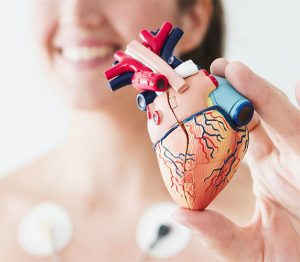By 2030, the “median 10-year risk of heart disease will increase to about 15% for men and 8.6% in women” according to a Health Affairs study reported in Beckers Hospital Review. This is an increase from 12.7% in men and 6.8% in women that was the incidence in 1991. According to the study’s author, Dr. Ankur Pandya, the Centers for Disease Control and Prevention estimate the cost of coronary artery disease to be $108.9 billion annually, including healthcare services, medications and lost productivity.
So what can you do to stem the tide for yourself?
There is a short list of primary, controllable factors that affect your risk of heart disease, stroke and metabolic syndrome, according to the American Heart Association:
- Smoking
- High blood pressure
- High blood cholesterol
- Diabetes
- Being overweight or obese
- Physical inactivity

It includes a questionnaire, tips on how you can make small, achievable improvements in some of your risk factors that may reduce your risk estimate, learn if your unique pattern of risk factors makes you more likely to be in a higher-risk category called “metabolic syndrome,” and how to develop your own plan to reduce your risk. Upon completing the assessment you will be able to print out a report detailing your risk factors.
Angina tends to happen with activity, after a heavy meal, or with emotional stress. However, angina may also happen when you are resting. The pain happens more in cold weather.
We recommend you use the Heart Attack Risk Calculator available on the AHA website:
Before you take the test, have your “numbers” handy, including:
- Your height and weight
- Your systolic (1st number) and diastolic (2nd number) blood pressure reading
- Your cholesterol measurements
- total cholesterol
- LDL (“bad”) cholesterol
- HDL (“good”) cholesterol
- triglycerides


Don’t rule out common sense
- Don’t smoke. If you do, there are many tools available to help you quit. You’ll save money, breathe better and smell better.
- Eat sensibly.
- Choose lean proteins like fish and poultry more often than red meat. Grill, broil and steam instead of frying.
- Increase your intake of vegetables and fruits. Opt for a rainbow of colors, such as vitamin-rich peppers in red, green and gold; green broccoli, spinach and lettuces; carrots and sweet potatoes. Choose whole fruit over juice to increase fiber and reduce calories. Make berries your go-to dessert and cereal companion.
- Go vegetarian at least occasionally, substituting beans and legumes for meat in soups, chili and pasta.
- Lower your intake of saturated fat by substituting lower fat dairy, such as 0% fat rich, thick Greek yogurt.
- Make exercise a daily habit. Walk the dog, go for a bike ride, hop on the treadmill instead of the couch to watch a movie at home.
- Reduce whatever stress you can control and be mindful when it gets the better of you so you can avoid it the next time.

